How EdTech CTOs Use the Staff Augmentation Process to Accelerate Delivery
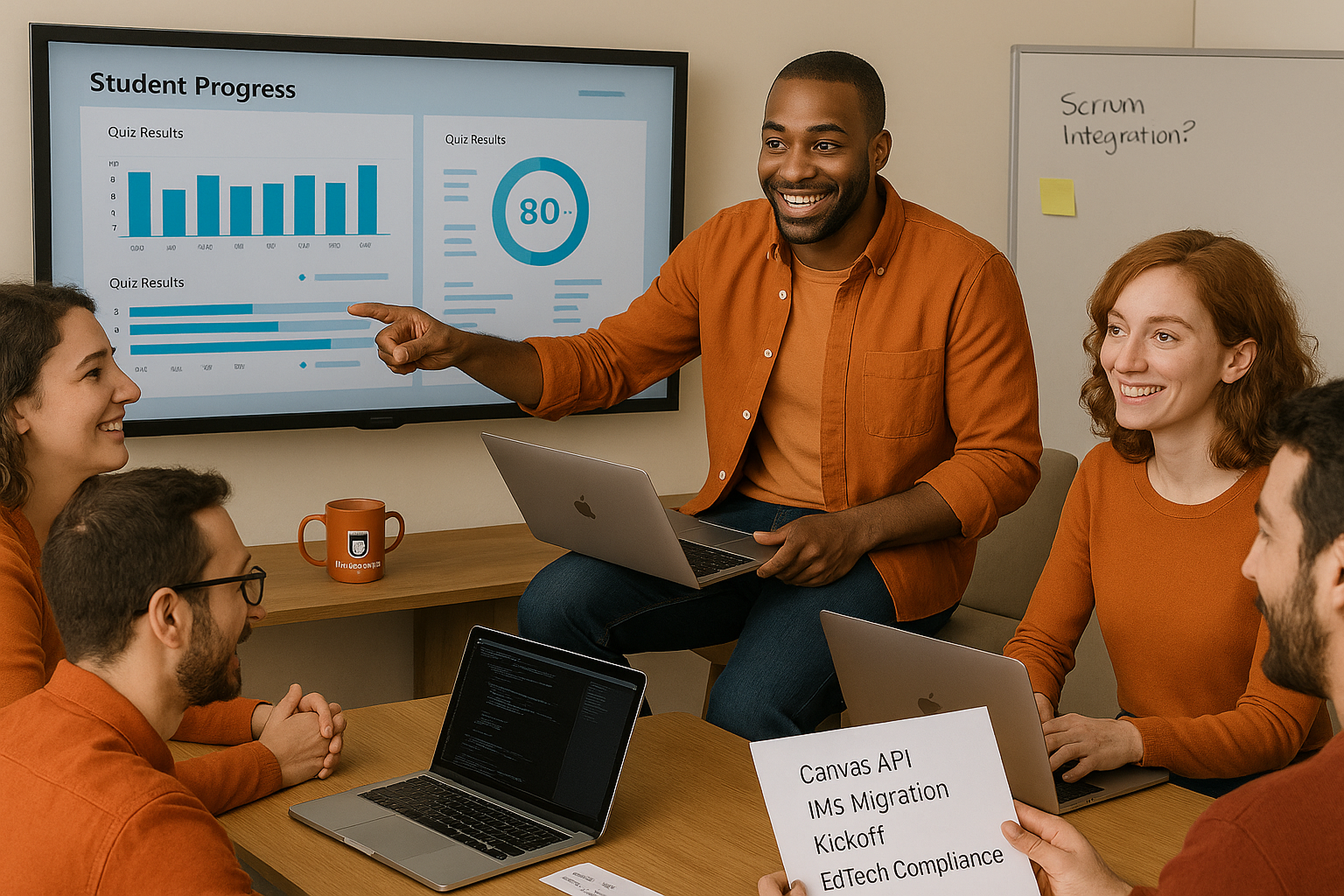
Building winning EdTech products demands speed, innovation, and measurable ROI. Traditional hiring can’t keep up with shifting technologies and seasonal education cycles. CTOs need instant talent access, not bloated recruitment pipelines.
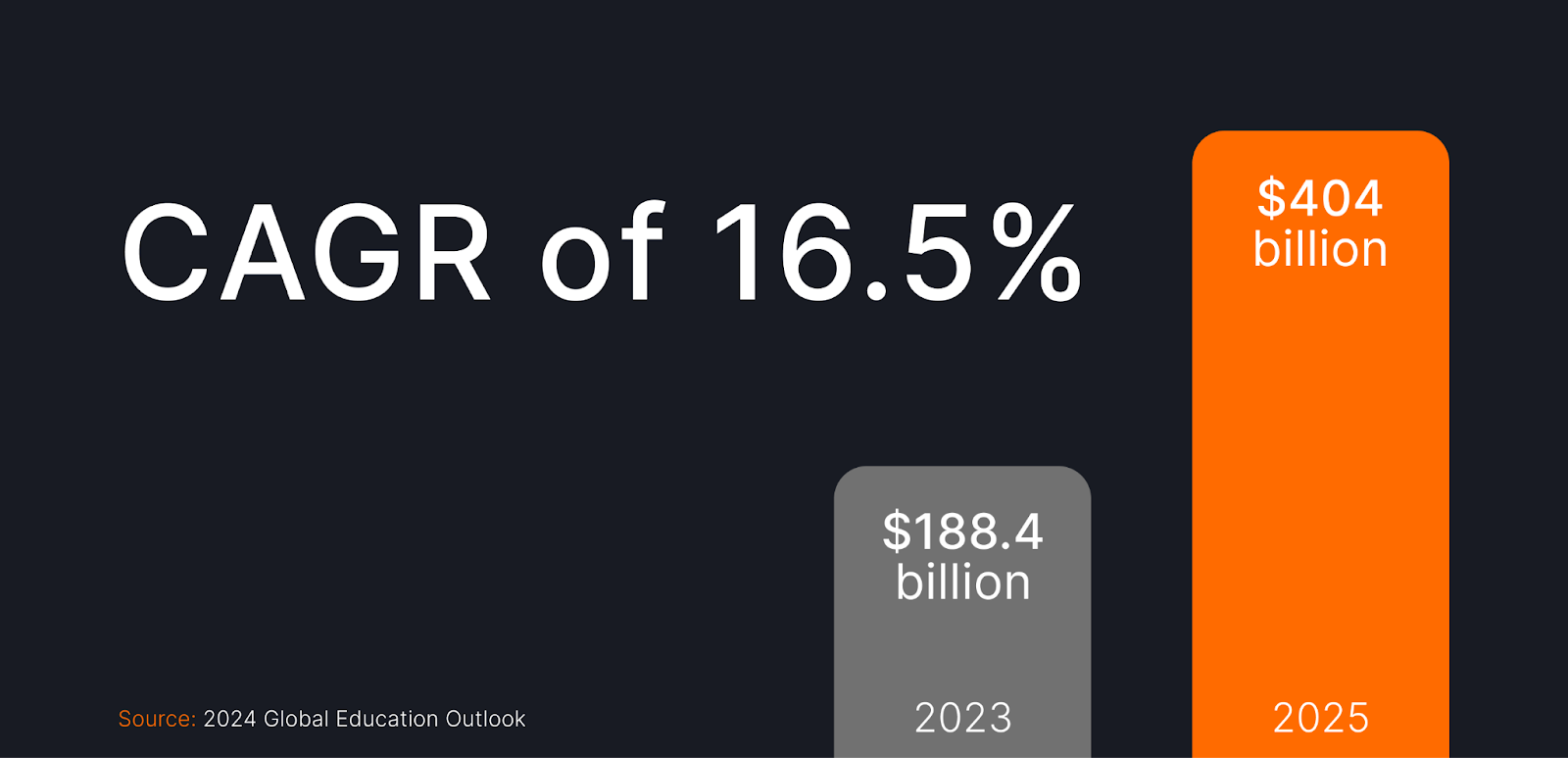
The staff augmentation process delivers three distinct engagement models, each targeting specific development bottlenecks. Match your augmentation model to your mission.
3 Staff Augmentation Strategies That Reshape EdTech Development
EdTech development demands different talent at different stages. A sound staff augmentation process matches specialized skills to your project requirements: commodity augmentation for scaling execution power, skill-based augmentation for accessing niche expertise, and managed teams for complex innovation sprints. Each model addresses specific bottlenecks in your development cycle.
Commodity-Based Augmentation: Scale Your Execution Power
EdTech delivery often involves intensive coding, particularly in areas like LMS (Learning Management System) integrations, frontend builds, and content tagging. Commodity-based staff augmentation services help fast-track support roles such as manual QA, junior developers, and data specialists.
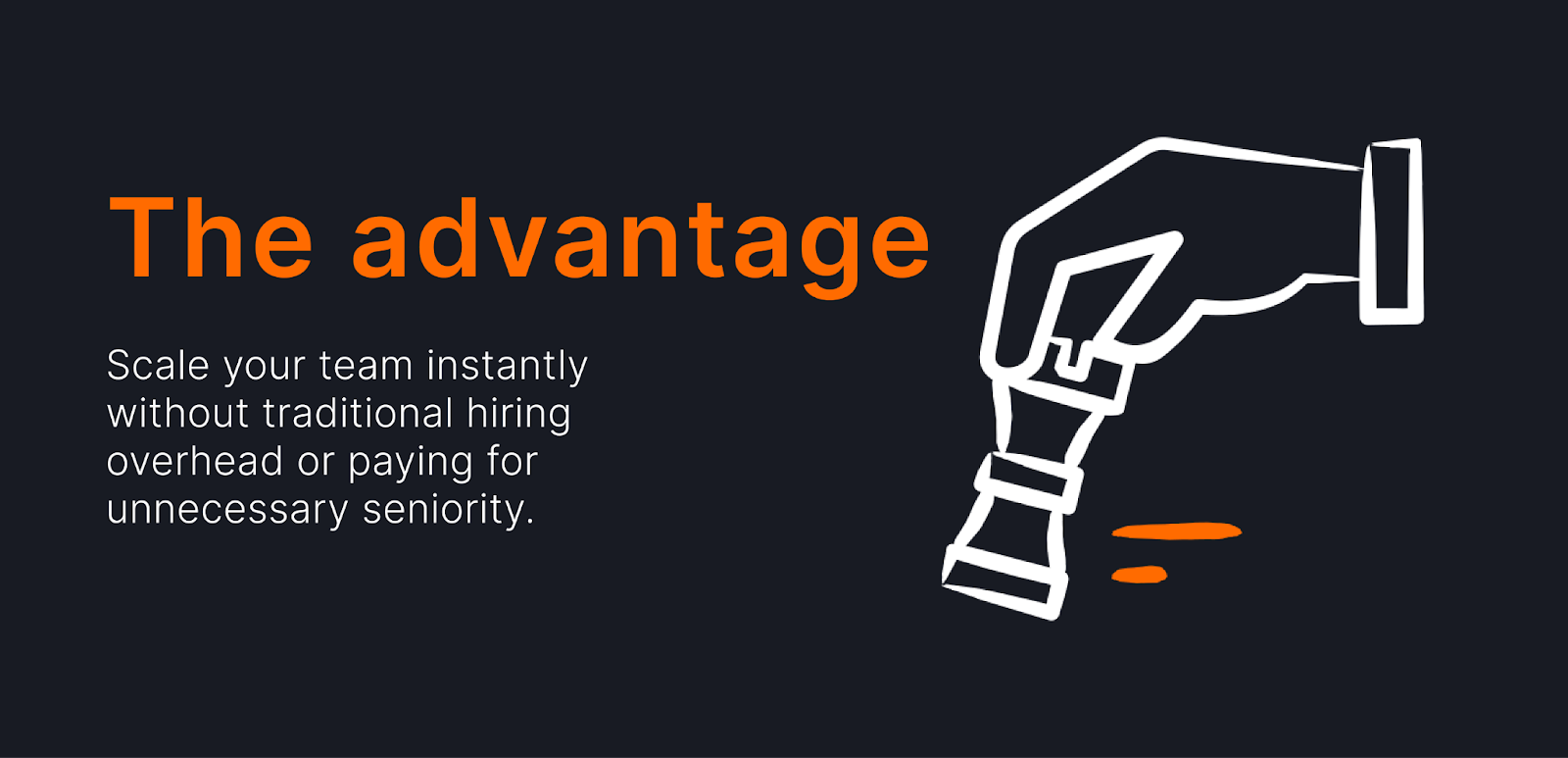
EdTech applications:
- Continuous LMS updates and patch management
- Student Information System (SIS) integrations and compliance data cleanup
- Mobile app wrappers for existing platforms
- Content management implementations
Success story: A language learning startup preparing for global expansion needed to build automated content processing pipelines for 12 languages. Instead of hiring full-time engineers, they deployed five backend developers through our staff augmentation process to build custom NLP integrations and automated QA systems.
The result: Their multilingual content pipeline deployed in three months, processing 100K+ learning modules with 99% accuracy while halving the project timeline.
Skill-Based Augmentation: Deploy Specialized Expertise on Demand
Skill-based augmentation provides critical skills your internal team may lack. This staff augmentation process helps EdTech CTOs maintain delivery velocity by embedding specialized talent precisely where the project needs it most.
Skill-based augmentation also gives your in-house team hands-on experience working with professionals with niche expertise. These external specialists bring proven EdTech experience, join your team ready to contribute, and can act as mentors — helping your existing staff build practical skills by collaborating on real features, rather than sitting through lectures or theoretical training sessions.
EdTech applications:
- Learning analytics architects and data visualization engineers
- Accessibility compliance specialists (Section 508, WCAG 2.1 AA)
- Integration experts for major platforms (Canvas, Blackboard, Google Workspace for Education)
- React Native developers for cross-platform education apps
Technical win: An adaptive learning platform needed gamification features with native mobile performance, but their internal team had zero mobile experience. Instead of traditional hiring that would take months, they embedded a senior React Native developer through skill-based augmentation services.
The result: Shipped iOS and Android apps in 12 weeks, saving 60% versus hiring full-time mobile developers and upskilling their existing developers through pair programming.
Highly Skilled Augmentation: Strategic Leadership Without the Executive Overhead
Managed teams provide highly skilled augmented staff, including senior professionals who can help shape technical strategy, elevate your internal team’s capabilities, and architect solutions with long-term impact. Your team gains CTO-level expertise precisely when it’s needed most.
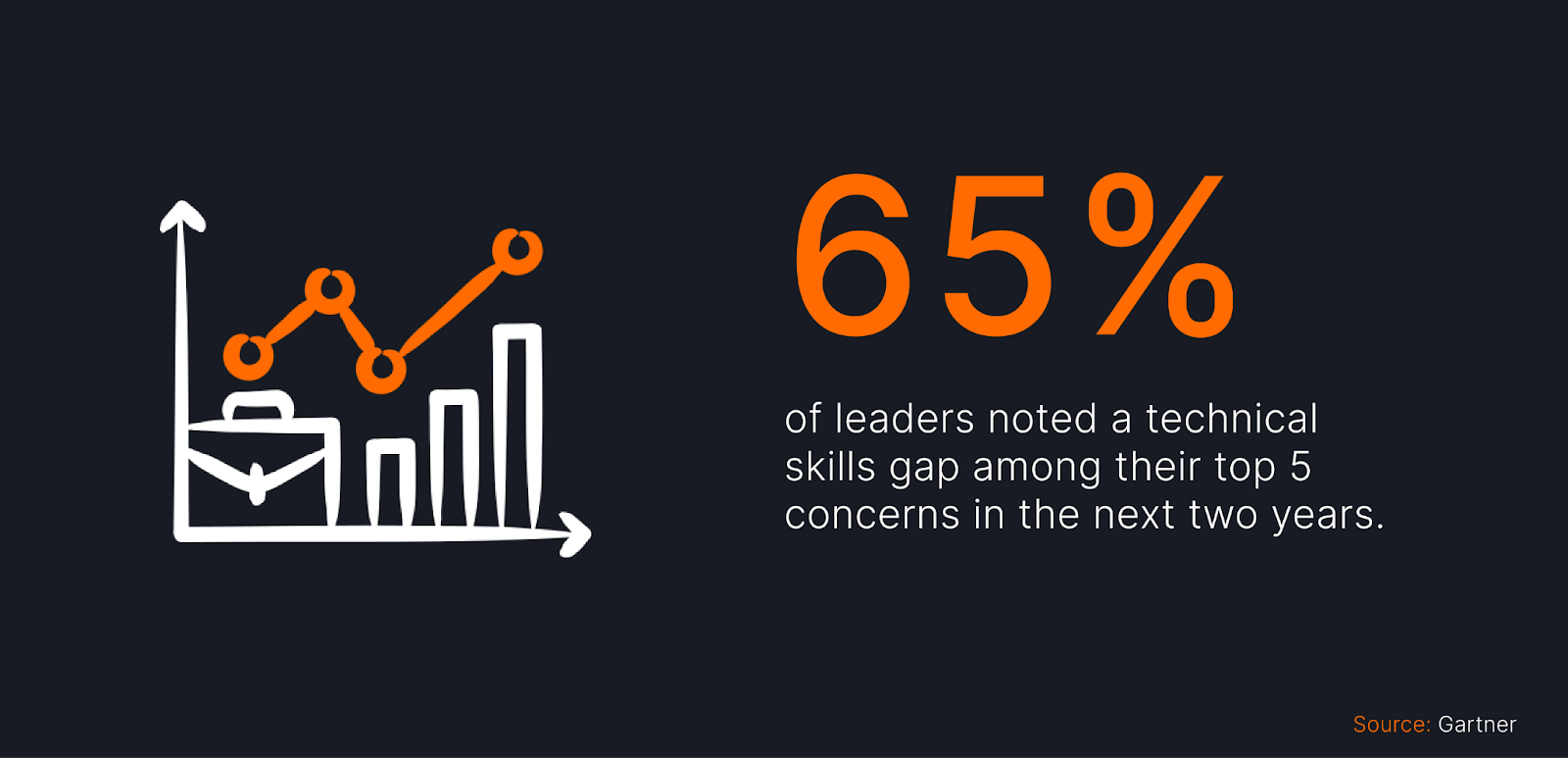
Skip the executive search firms and equity negotiations. Highly skilled augmentation services deliver technical leadership for critical phases like platform pivots, security overhauls, or pre-funding technical audits. No permanent C-suite expansion required.
Strategic deployments:
- Architecture reviews before major scaling initiatives
- Security framework design and compliance implementation
- Technical leadership during product transformation
- Due diligence preparation for Series A+ rounds
Success story: A test-prep platform serving two million students was at risk of infrastructure meltdown before peak exam season. Traditional hiring would take 4-6 months. Instead, they deployed a senior cloud architect through our staff augmentation process. This AWS and Kubernetes expert redesigned their entire backend in 6 months, slashing response times by 70% and cutting infrastructure costs by 30%. The existing team learned enterprise-scale patterns through direct collaboration, creating lasting organizational value beyond the project timeline.
When Staff Augmentation ROI Hits Your EdTech Timeline
EdTech CTOs calculate ROI (return on investment) timelines for every technical decision. With the staff augmentation process, the value is tangible; you create maximum impact by scaling your engineering department with the skills it most needs precisely when they are most needed.
The returns start immediately and compound over time. Your internal team maintains momentum while external professionals handle specialized execution. Here's how value builds when you match implementation to these natural acceleration points.
Weeks 1-4: Shipping Code While Others Ship Resumes
Augmented engineers join your team ready to contribute. Within 72 hours, they're pushing commits. By week one, they're closing tickets. This isn't magic. It's what happens when skilled professionals match your exact tech stack and project requirements.
Your existing team stays focused on core features while augmented talent tackles immediate needs: stabilizing pre-launch code, crushing bug backlogs, implementing critical integrations. For EdTech teams racing against back-to-school deadlines or investor demos, this instant velocity transforms timelines.
Teams using traditional hiring still post job descriptions while your augmented developers already ship features. The math is simple — the impact is immediate.
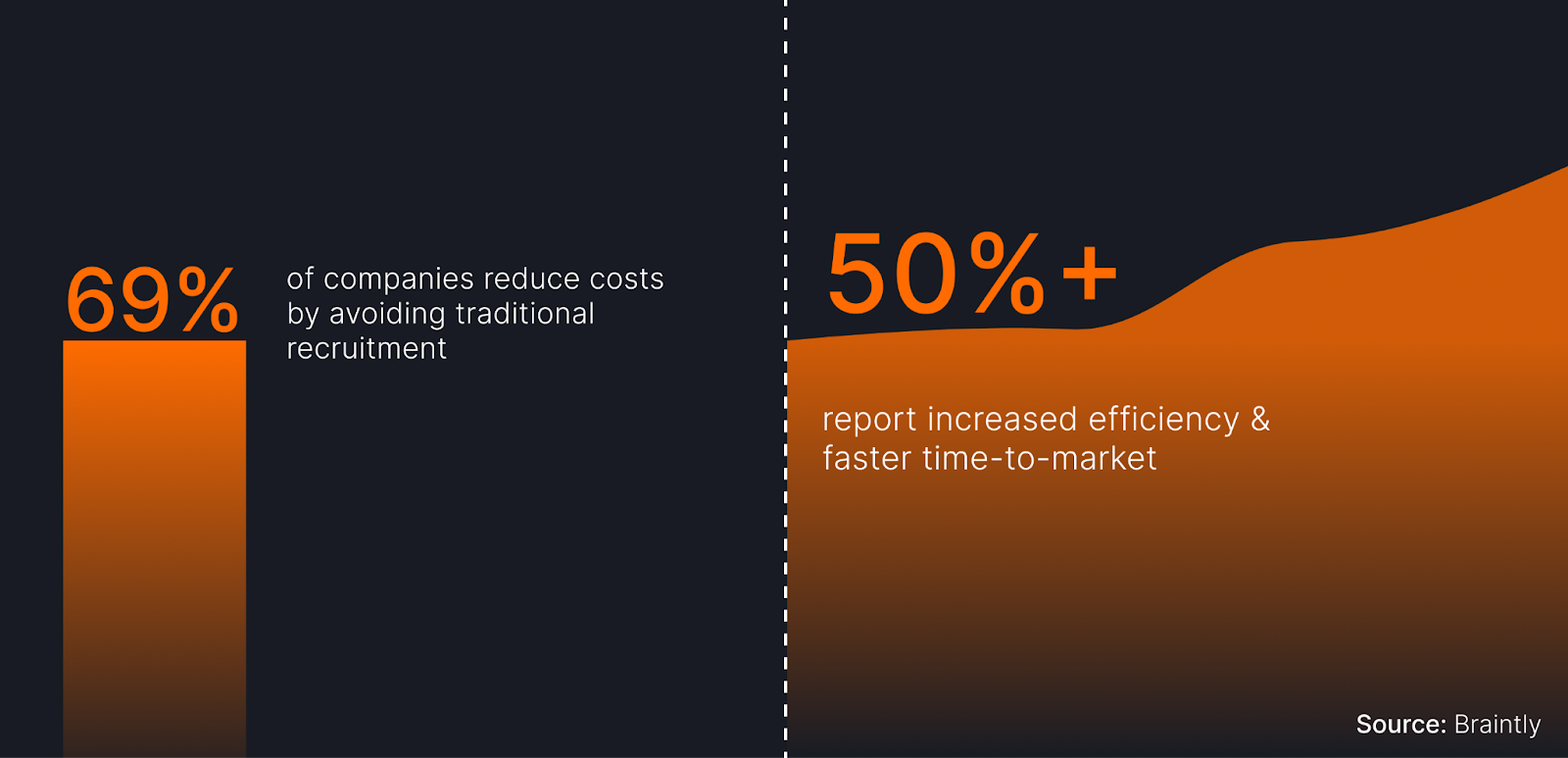
Months 2-6: Peak Performance and Cost Efficiency
By month two, the numbers tell the story. Your team operates at peak velocity while costs stay predictable and controlled. The financial wins become undeniable:
- Zero recruiter fees and hiring overhead
- No onboarding or training investments
- Predictable monthly costs versus volatile full-time employee compensation
- 20-30% total savings compared to traditional hiring when factoring benefits, equipment, and workspace
- Complete control over work processes and deliverables, a key advantage of staff augmentation versus outsourcing.
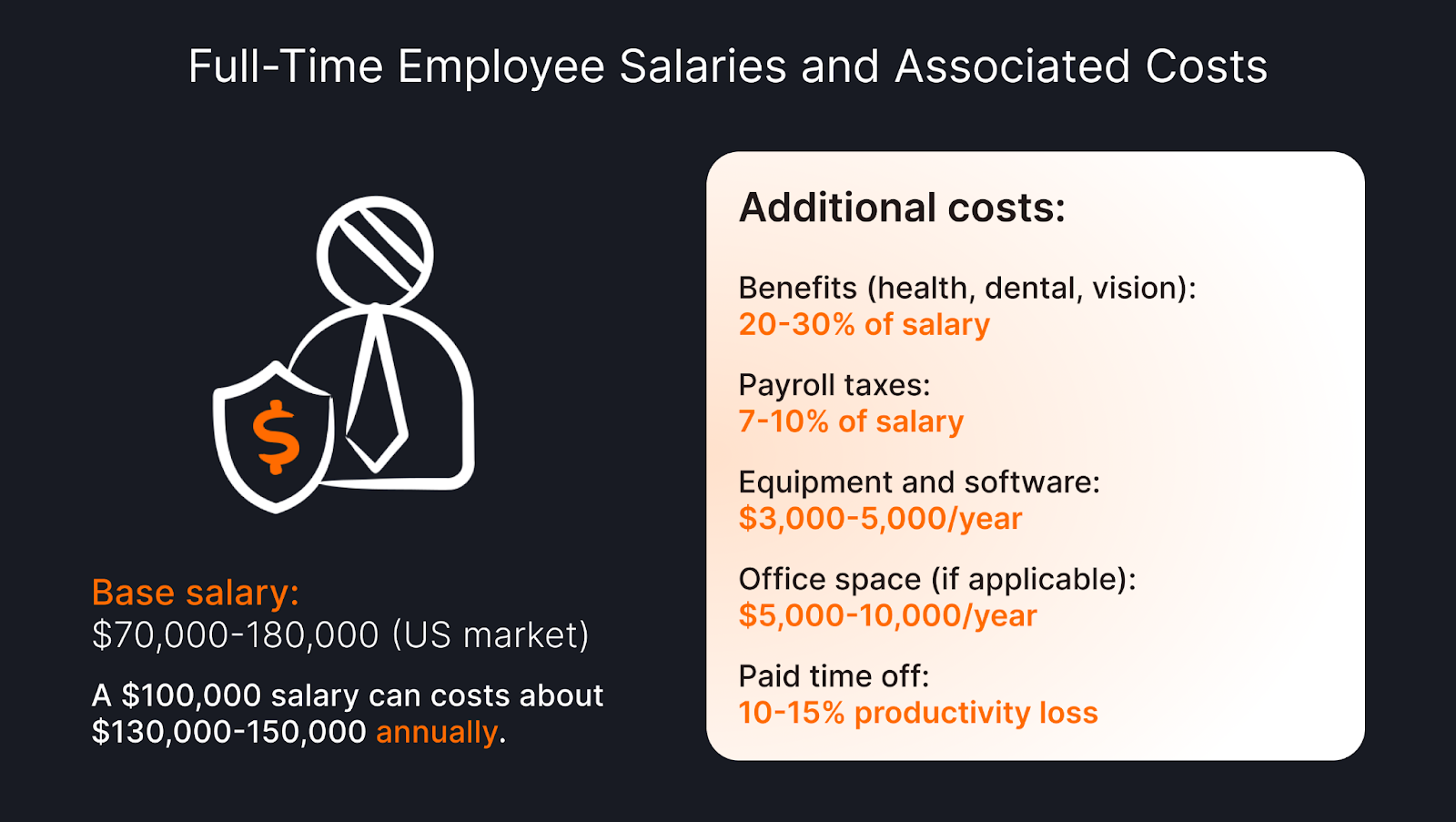
The advantage of expertise drives even greater returns. Your specialized skills gaps disappear overnight. Need AI-powered adaptive learning algorithms, FERPA-compliant data architecture, or WCAG accessibility implementation? External professionals with proven EdTech experience deliver these specific skills faster than generalist developers ever could. This precision eliminates expensive rework and keeps the project on schedule.
Your team capacity finally matches EdTech's seasonal demands. Scale up for back-to-school launches. Reduce during summer lulls. Your in-house team maintains stability while augmentation services provide the flexibility to ensure optimal resource allocation year-round.
6+ Months: Compound Value Through Knowledge Transfer
Long-term staff augmentation transforms from tactical execution to strategic capability building.
The new methodologies, architectural patterns, and problem-solving approaches your team learns through daily collaboration with specialists has a lasting impact. If, for example, you scale your team back during summer, your in-house staff will have the knowledge to keep things running smoothly until you ramp your team back up.
Embedded augmented professionals contribute beyond code delivery. They identify process inefficiencies, suggest tooling improvements, and bring fresh perspectives to an in-house team that might have grown overly comfortable to familiar workflows.
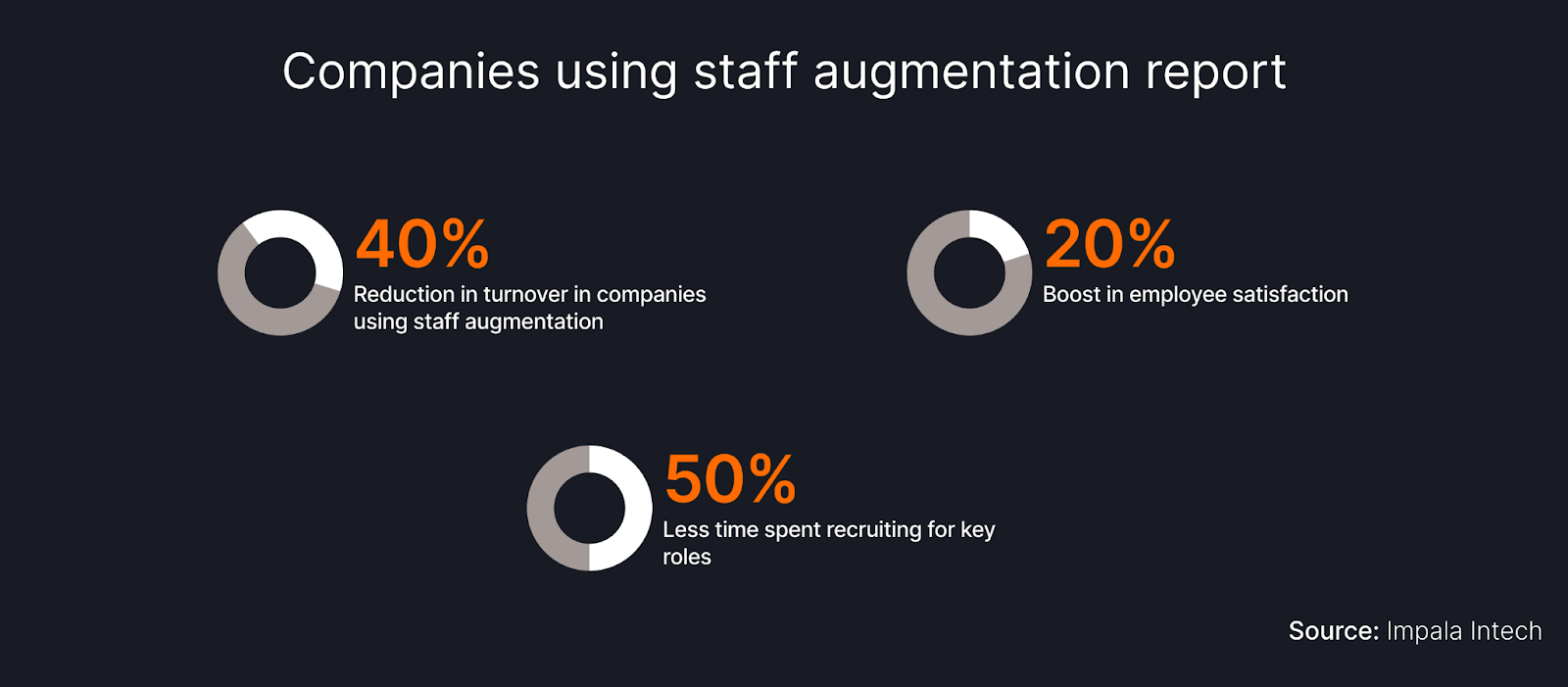
CTOs gain unprecedented visibility into actual delivery capacity. With augmented and internal developers working side-by-side, you collect real performance data to inform strategic decisions. Use these metrics to justify budgets, forecast future business needs, and demonstrate velocity improvements to executive leadership. Data-driven staffing decisions replace guesswork.
How Smart CTOs Navigate Staff Augmentation Challenges
The staff augmentation process delivers massive advantages, but execution determines success. Experienced EdTech CTOs recognize common pitfalls: delivery delays, quality variance, and integration friction. These challenges follow predictable patterns; informed leaders solve them before they impact the project.
Communication Gaps That Kill Velocity
Especially when engaging offshore developers, time zones create the first hurdle. Your internal team might operate 9-to-5 Eastern while augmented developers code from New Zealand. Critical pull requests (PRs) risk sitting overnight, and scheduling standups turns into a logical puzzle.
Work style mismatches compound the issue. External professionals might document everything meticulously while your in-house team prefers quick Slack threads. Progress stalls when communication breaks down, and EdTech deadlines tied to academic calendars can't accommodate these delays.
Top-performing teams implement these solutions:
- Lock in 2-3 hours of daily overlap for synchronous collaboration
- Master async workflows: comprehensive PR descriptions, Loom updates, and living documentation in Notion or Confluence
- Establish handoff protocols that eliminate dropped balls between team transitions
The teams that thrive with augmentation services treat communication architecture as seriously as system architecture. Build these foundations early to ensure smooth delivery throughout your engagement.
Quality Control That Protects Your Product
Not all "senior developers" deliver senior-level work. When external professionals handle critical EdTech components like AI personalization engines, LMS integrations, or accessibility compliance, mediocre code becomes catastrophic.
Quality failures in EdTech destroy more than sprints; they destroy trust. Broken quiz submissions tank student confidence. Failed accessibility features trigger compliance violations. Buggy onboarding flows lose entire school districts. Your brand reputation evaporates with every crashed lesson.
Top CTOs maintain excellence through systematic quality gates:
- Weekly architecture reviews align every technical decision with your existing team standards
- Monthly security and accessibility audits catch issues before they reach production
- Living documentation of coding standards eliminates ambiguity from day one
Smart teams engineer quality into the staff augmentation process instead of leaving it to chance. Set these systems before your augmented developers submit their first PR. Quality becomes predictable when you build the right checkpoints.
Security Without Paranoia
Every new contributor expands your attack surface. When external professionals access production systems, databases, or core infrastructure, security becomes critical. Your student data and institutional trust hang in the balance.
Smart CTOs skip the manual oversight theater. They automate security into the development workflow.
Build these safeguards before day one:
- Automated security scanning on every commit through GitHub Actions or GitLab CI
- Role-based access that limits permissions to exact project needs
- Data compartmentalization keeping sensitive student information isolated
This automation protects your intellectual property and the student’s personally identifiable information, while maintaining development velocity. Security becomes invisible to your team but impenetrable to threats.
EdTech Expertise Gaps Cost More Than Time
Developers without EdTech experience can struggle with its complexity and unique challenges. Proficiency with React means nothing if the developer can't navigate SCORM packages or comply with FERPA regulations. Your internal team wastes cycles teaching domain basics instead of building features.
These skills gaps create cascading failures: botched LMS integrations, accessibility violations, student privacy breaches. The resulting rework cancels out any savings from the staff augmentation process.
Filter for EdTech fluency from the start:
- Test domain knowledge alongside technical skills: Can they integrate Canvas APIs AND explain WCAG compliance?
- Create EdTech-specific onboarding covering compliance frameworks, accessibility standards, and education data governance
- Choose augmentation services that pre-screen for education technology experience
Genius Match eliminates these risks by vetting for EdTech expertise before candidates reach your team. We ensure external professionals understand academic calendars, student privacy laws, and accessibility requirements from day one.
Staff Augmentation: A Partner Selection Framework That Actually Works
Choosing the right augmentation partner will determine the success or failure of your project. Most teams compare prices, cross their fingers, and hope for competent delivery, but this approach all but guarantees disappointment.
Smart EdTech CTOs validate capabilities first, then negotiate terms that protect outcomes alongside budgets. This framework separates strategic partners from commodity vendors through systematic evaluation.
The Three-Filter Vetting Process
To help ensure your project’s success, work with an augmentation partner who uses a system that includes these three processes in their onboarding.
Filter 1: EdTech Credibility Check
Generic software development experience means little in education technology. Your internal team shouldn't waste time teaching partners basic EdTech requirements, so demand specific proof of educational product expertise from the start.
Ask these qualifying questions:
- Show me Canvas, Blackboard, or Moodle integrations your team has built
- Explain your FERPA compliance testing methodology
- Demonstrate accessibility implementations meeting WCAG 2.1 AA standards
Reject generalist firms that showcase e-commerce or SaaS projects. Pretty interfaces don't translate to student data protection expertise, and government-funded curriculum platforms require specialized knowledge that vendors have to have.
Filter 2: Technical Depth Assessment
Slick sales presentations can hide execution reality. Test actual problem-solving with scenarios from your roadmap. For example, you might ask:
"We need to aggregate performance data from Google Classroom, Canvas, and our proprietary assessment engine while maintaining FERPA compliance and sub-second response times. Detail your technical approach."
Evaluate the quality of their response:
- Do they propose solutions or pitch services?
- Can they explain complex architecture to your mixed technical and product team?
- What clarifying questions reveal their thinking process?
Partners who can't communicate technical decisions clearly during evaluation will bottleneck your project later. Clear communication during assessment predicts smooth project velocity, while confusion during vetting guarantees implementation crisis.
Filter 3: Partnership Model Evaluation
EdTech projects change with shifting academic requirements and accessibility standards. Your staff augmentation partner needs to be able to adapt to these changes without derailing delivery timelines or overly inflating project scope.
Assess their flexibility by asking questions such as:
- How do you manage scope changes that emerge mid-sprint without disrupting team velocity?
- What structured documentation and knowledge transfer protocols ensure smooth handoffs to your internal team?
- Do you provide ongoing support beyond initial execution, or do engagements end abruptly at contract completion?
Negotiate Terms That Align With Your Business and Staff Augmentation Goals
Contracts create strategic frameworks that protect your innovation velocity. They align execution with business needs while safeguarding your ability to ship on time. EdTech CTOs who nail contract terms build resilient partnerships by:
- Locking down intellectual property from day one.
Your company owns every line of code, every technical document, every architectural decision created during the engagement. Some augmentation services sneak in "reusable component" clauses hoping to retain your innovations. Reject these immediately. Your code stays yours, period.
- Safeguarding critical project knowledge.
Mandate comprehensive documentation standards, detailed code comments, and structured knowledge transfer between external professionals and your internal team. Schedule regular pairing sessions. Record architectural decisions. Build institutional memory that survives any team changes.
- Enforcing performance standards.
Specify exact quality benchmarks, response times, and delivery milestones. Then define what happens when standards slip. Resource replacements within 48 hours. Negotiate for cost reductions for missed SLAs. Have timeline adjustments that protect your roadmap. Accountability mechanisms like these ensure excellence.
- Being prepared for change.
Academic partners can change your requirements mid-sprint, and compliance teams sometimes mandate new accessibility standards. Your staff augmentation process needs to be able to flex without breaking. Build explicit change protocols into contracts. Define how scope shifts will be priced, how timeline impacts are managed, and how revised deliverables get accepted.
- Not compromising on security and compliance.
Student data protection through FERPA and COPPA stays paramount. Require security certifications, compliance training verification, and system audit rights. Include breach notification timelines and incident response procedures. Educational data demands bulletproof protection.
Smart contracts eliminate ambiguity and accelerate development, allowing your team to build transformative education technology with legal clarity. This structure enables innovation.
Delivering Results With Augmented Teams
In EdTech, academic deadlines drive development and quality impacts student outcomes. Proper execution is both an ethical and moral imperative. Your augmentation services need structure, visibility, and agility from day one.
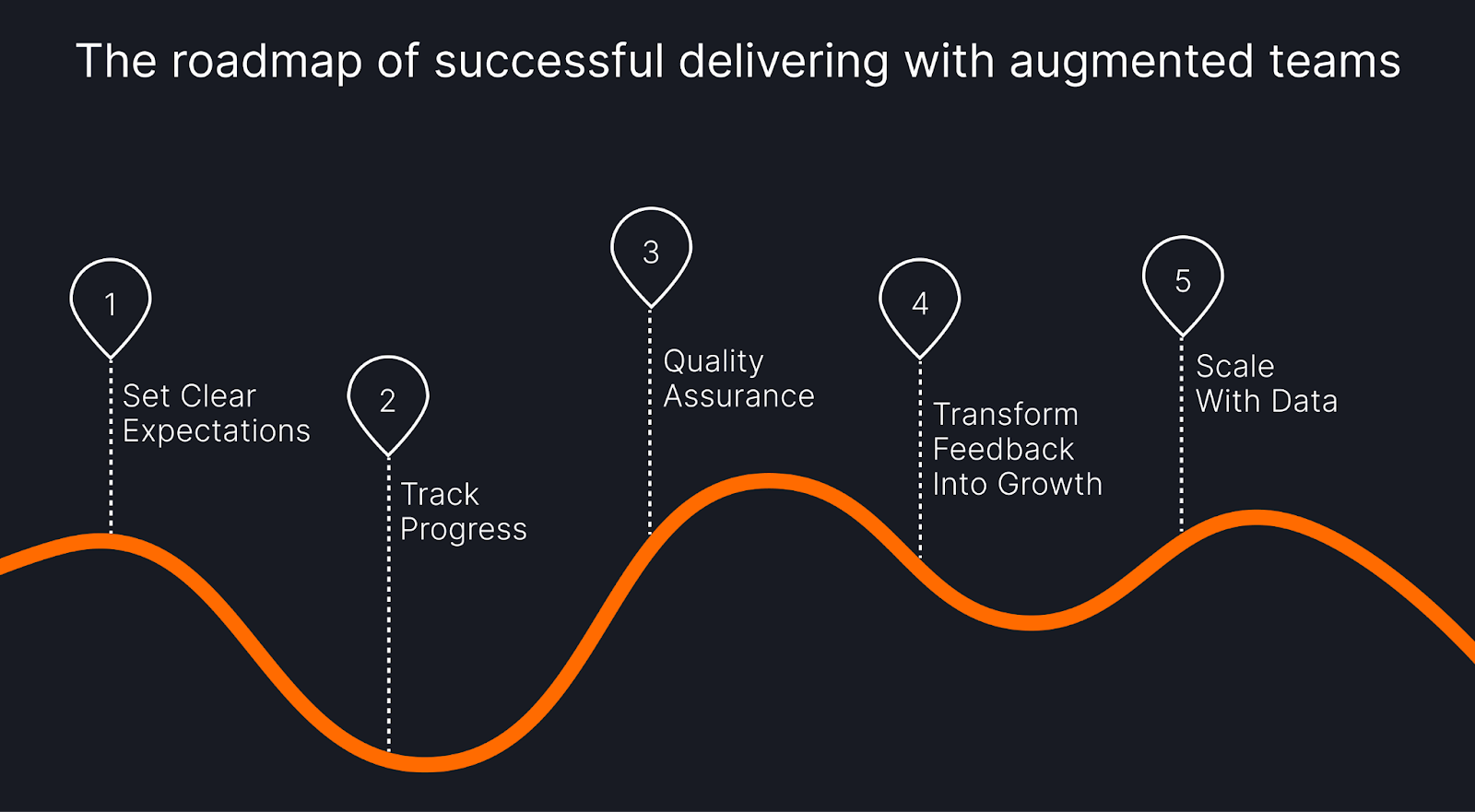
Start With Clear Expectations
Every augmented developer needs precise context: deliverables, success metrics, and deadlines. Each task requires an owner, clear requirements, and visible timelines.
Unify your team around existing project management tools. Whether your internal team uses Jira, Asana, or ClickUp, augmented professionals should work within established workflows. Create a single source of truth for each project so that there is zero ambiguity.
Track Progress Beyond Burndown Charts
Effective progress tracking catches challenges before they become problems. Implement weekly check-ins, sprint demos, and structured async updates to surface blockers early. Traditional hiring creates communication silos. Smart augmentation breaks them down.
Build communication rhythms that respect time zones while maintaining momentum. Loom walkthroughs beat lengthy emails. Structured Slack threads outperform scattered DMs. Daily written standups keep everyone aligned without meeting fatigue.
Engineer Quality Into Every Commit
Quality standards apply equally to every team member. External professionals follow code review processes, automated testing requirements, and deployment protocols that are identical to your existing team’s. No shortcuts. No exceptions.
Implement these quality checks before the first PR:
- Automated CI/CD pipelines with security scanning
- Peer review requirements for all code changes
- Accessibility and compliance checks built into workflows
Transform Feedback Into Growth
Skip the binary approve/reject feedback loop. Instead, coach your augmented talent on architecture decisions, product priorities, and performance tradeoffs. When you invest in their understanding, they deliver deeper contributions and faster velocity.
This investment pays off. Skilled professionals who understand your codebase and your business needs become force multipliers for your team.
Scale With Data, Not Guesswork
EdTech project scopes shift constantly. There are new government requirements, updated accessibility standards, and sudden enrollment spikes. Your team structure needs to be able to adapt on the fly.
Use concrete metrics to guide scaling decisions:
- Velocity trends across sprints
- Cycle time from ticket to production
- Defect rates by feature area
- Time to resolution for critical bugs
These numbers justify team adjustments to stakeholders while ensuring optimal resource allocation.
The Bottom Line: Manage augmented talent like permanent team members. For the project duration, they are your team. This mindset transforms staff augmentation from temporary help to lasting competitive advantage.
Why Genius Match Powers EdTech Innovation
Building education technology demands partners who understand both its technical complexity and academic urgency. Genius Match delivers pre-vetted talent with the precision, speed, and commitment your team needs to ship exceptional products.
- Beyond Resume Matching: True Technical Alignment
We decode your entire ecosystem: tech stack, team dynamics, development culture. Our staff augmentation process identifies engineers who integrate seamlessly with your existing team. Surface skills get you started. Deep alignment ensures long-term success.
- Active Partnership Throughout Every Sprint
Our engagement extends beyond placement. From structured onboarding through continuous performance optimization, we actively manage every phase to ensure your augmented professionals maintain peak productivity aligned with project requirements.
- EdTech-Specific Technical Excellence
Our talent network targets education technology needs, including React and Angular architects who've built student portals, Python and Java engineers experienced with learning analytics, AI/ML specialists who understand adaptive learning algorithms, and DevOps experts familiar with academic scale demands. Real experience, proven results.
- Scaling Models That Match Your Reality
Need two React Native developers for mobile features? Or an entire squad for platform migration? Our augmentation model flexes with your roadmap. No unnecessary overhead. No rigid contracts. The right skilled professionals exactly when your business needs them.
- Global Talent, EdTech Understanding
Our worldwide network delivers specialized skills with regional expertise. Launching in North America? Expanding to meet GDPR requirements? We combine global reach with local compliance knowledge, ensuring rapid deployment without regulatory surprises.
Conclusion
Staff augmentation empowers EdTech companies to accelerate development while maintaining exceptional quality standards. When academic deadlines loom and specialized skills remain scarce, the right augmentation services transform your team's capacity overnight.
Success requires treating augmentation as a core strategy, not an emergency backup. Plan augmentation cycles aligned with your product roadmap. Structure integration protocols before your first external professional joins. Optimize continuously based on delivery metrics and team feedback.
The staff augmentation process works best when you work it strategically. Your internal team maintains product vision and architectural control while skilled professionals handle specialized execution. Traditional hiring can't match this flexibility or velocity.
Innovation in EdTech is happening daily. Student expectations rise. Competition intensifies. The companies winning this race blend permanent talent with strategic augmentation to ensure they ship features while others ship job postings.
Frequently Asked Questions (FAQ)
Below we answer some of the most frequently asked questions about how staff augmentation processes can affect your business.
How does staff augmentation help CTOs meet release deadlines in EdTech?
Staff augmentation delivers specialized talent to EdTech CTOs immediately, bypassing traditional hiring delays. Teams scale resources instantly to match sprint demands, ensuring release deadlines stay locked while priorities shift. No more choosing between speed and quality.
What are the risks of relying on full-time hires during critical sprints?
Hiring permanent employees during crunch time creates expensive problems. Rushed decisions lead to poor culture fit. You pay full onboarding costs for temporary needs. When the sprint ends, you're stuck with long-term overhead for short-term requirements. Smart CTOs avoid this trap.
Can augmented staff adapt quickly to our existing agile workflows?
Absolutely. Experienced professionals from quality partners integrate into agile teams within days. Genius Match developers join your standups, adopt your tools, and start contributing meaningful code within the first week. No workflow disruption, just added velocity.
How do you maintain knowledge continuity with temporary team members?
Knowledge retention happens through intentional process. Document critical decisions in your wiki. Structure handoffs with overlap periods. Pair augmented developers with core team members. Create clear code review processes. Knowledge stays internal when you build the right systems.
What EdTech-specific skills should augmented developers have?
Your product determines the specifics, but EdTech developers need real experience with LMS platforms, accessibility standards (WCAG 2.1), and integration protocols like SCORM or xAPI. They also need to understand student data privacy regulations including FERPA and COPPA. Academic knowledge doesn't cut it; they need hands-on experience.
How long does it take to ramp up an augmented team?
With seasoned developers and solid onboarding, expect meaningful contributions within 1-2 weeks. Full integration happens by week 3-4. Compare that to 3-6 months for traditional hires who need both technical and domain onboarding.
What's the best way to blend external developers with internal product teams?
Integration starts with clarity. Define roles explicitly. Use shared communication tools (Slack, Jira, GitHub). Schedule overlapping work hours for real-time collaboration. Most importantly, assign meaningful features from day one. Putting team members into silos where they work on separate projects can ruin team cohesion. Shared goals build unified teams.
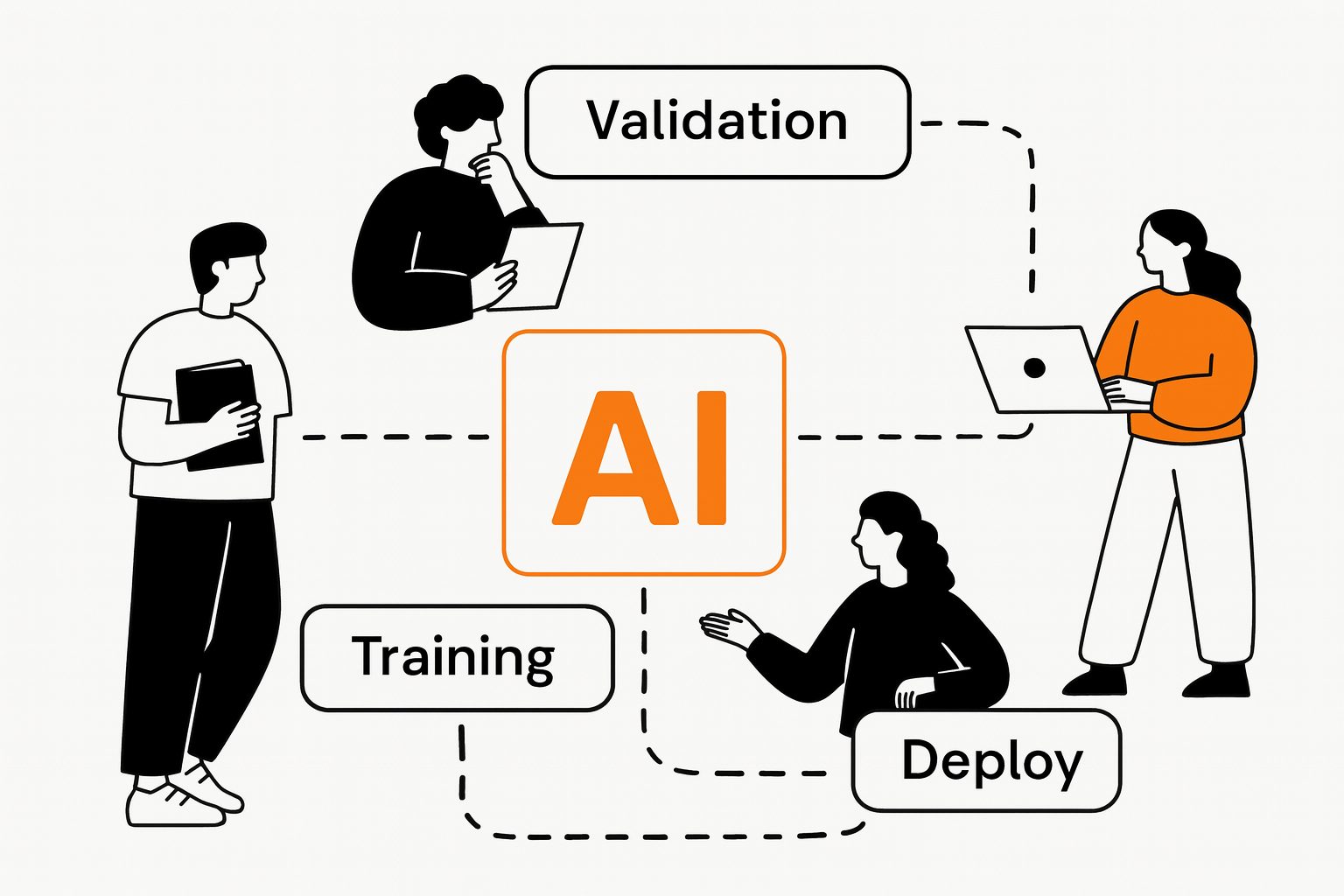
Building Successful AI-Enabled Technology Teams - A Strategic Framework for the Modern Enterprise
Discover how to build successful AI-enabled teams with proven frameworks, AI developers, and talent management strategies for modern software development.

Genius Match Strengthens Leadership Team with Industry Veterans Helen Prashchur and Elizabeth Jenkins
Genius Match announced the appointment of two seasoned sales executives to drive North American expansion.
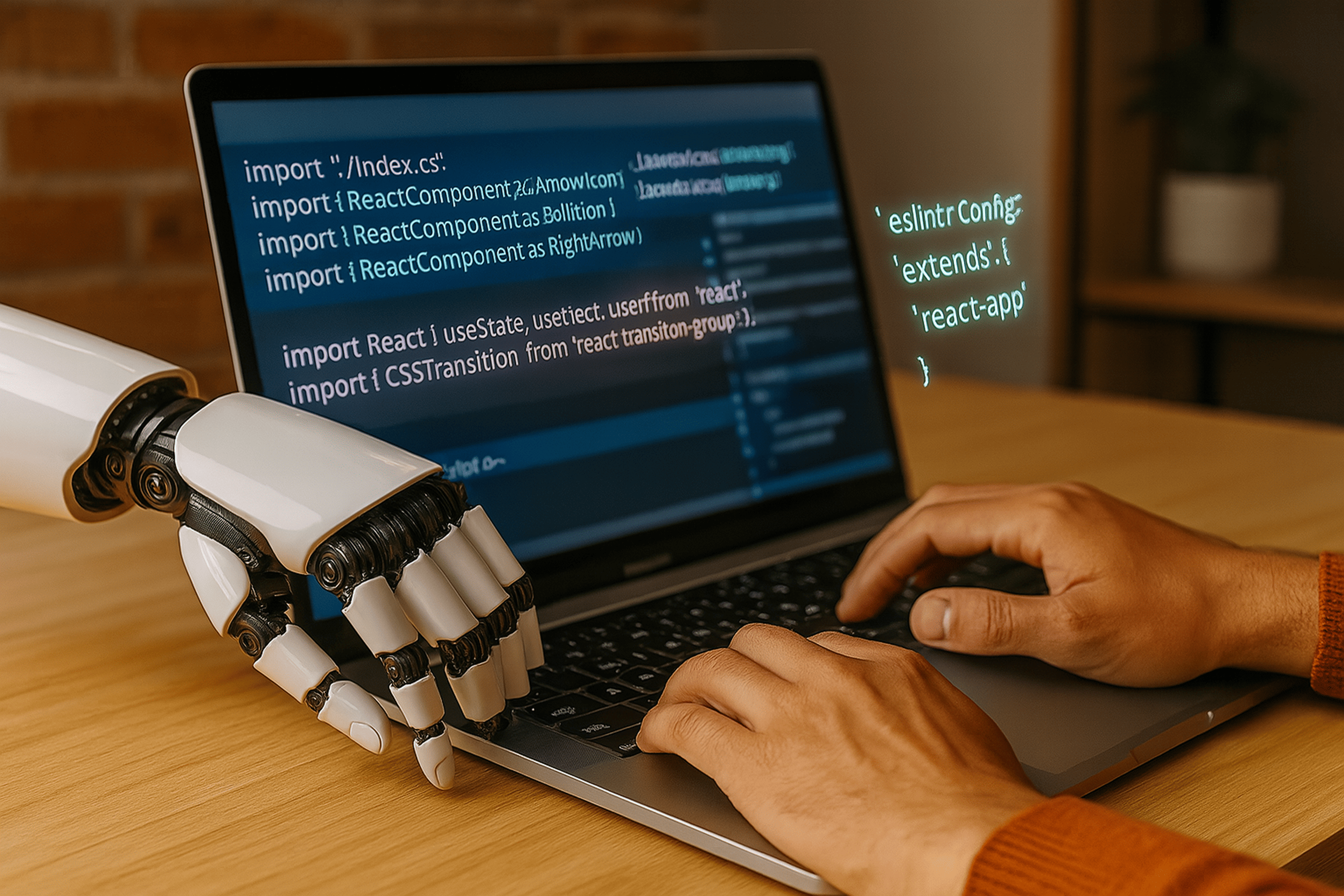
The AI-Driven Evolution of Software Development: Why Global Talent and Human Expertise Matter More Than Ever
The software development landscape has undergone a seismic shift. AI assistants now write code, automate complex tasks, and streamline development workflows in ways that seemed impossible just a few years ago. While this revolution has transformed how we build software, it has also created new challenges and misconceptions that are reshaping the entire industry.